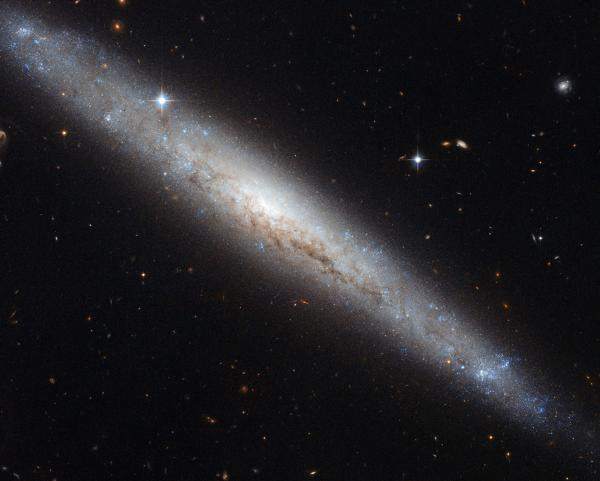NASA’s Hubble space telescope has snapped a picture of galaxy NGC 4183, seen below with a beautiful backdrop of distant galaxies and nearby stars.
Located approximately 55 million light-years from the sun and spanning about eighty thousand light-years, NGC 4183 is a little smaller than the Milky Way.

This galaxy, which belongs to the Ursa Major Group, lies in the northern constellation of Canes Venatici (aka The Hunting Dogs).
NGC 4183 can best be described as a spiral galaxy with a faint core and an open spiral structure. Unfortunately, the galaxy is viewed edge-on from the Earth, and so we cannot fully appreciate its spiral arms. Nevertheless, we can still admire its galactic disk from afar.
The disks of galaxies are mainly composed of gas, dust and stars. There is evidence of dust over the galactic plane, visible as dark intricate filaments that block the visible light from the core of the galaxy. In addition, recent studies suggest that this galaxy may have a bar structure.
Galactic bars are believed to act as a mechanism of sorts that channels gas from the spiral arms to the center, enhancing star formation, which is typically more pronounced in the spiral arms than in the bulge of the galaxy.
NGC 4183 was first observed by British astronomer William Herschel on January 14, 1778.






